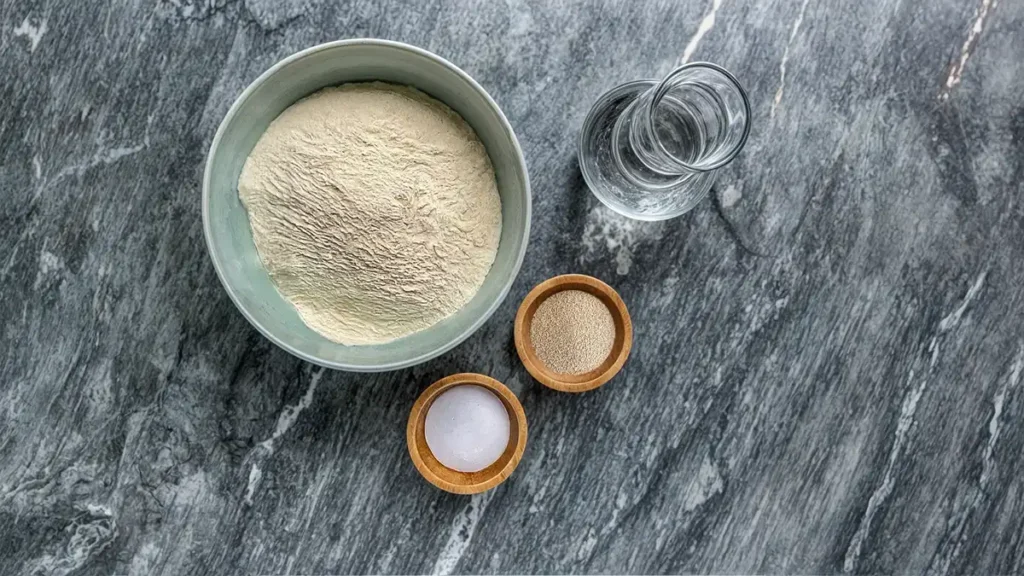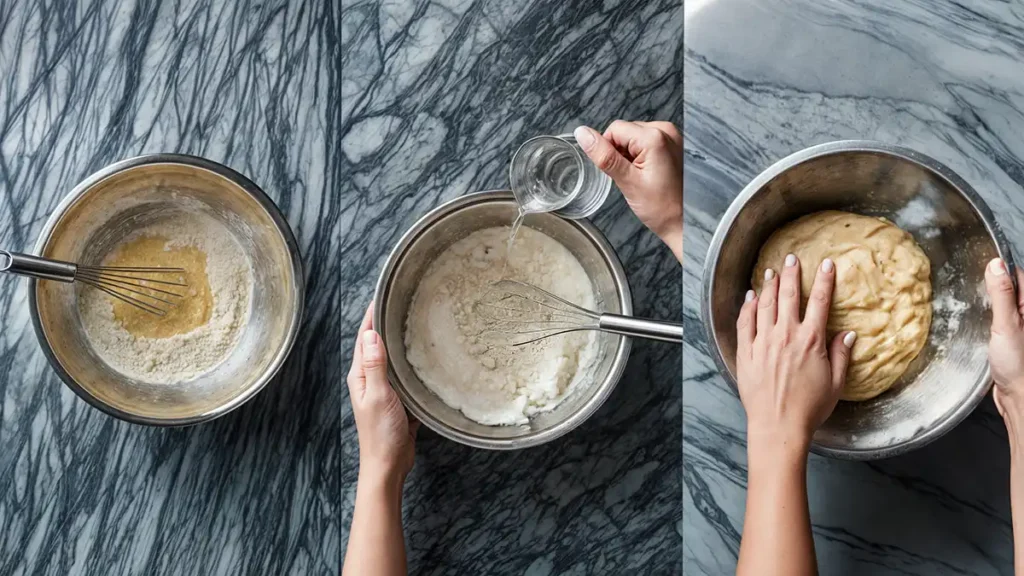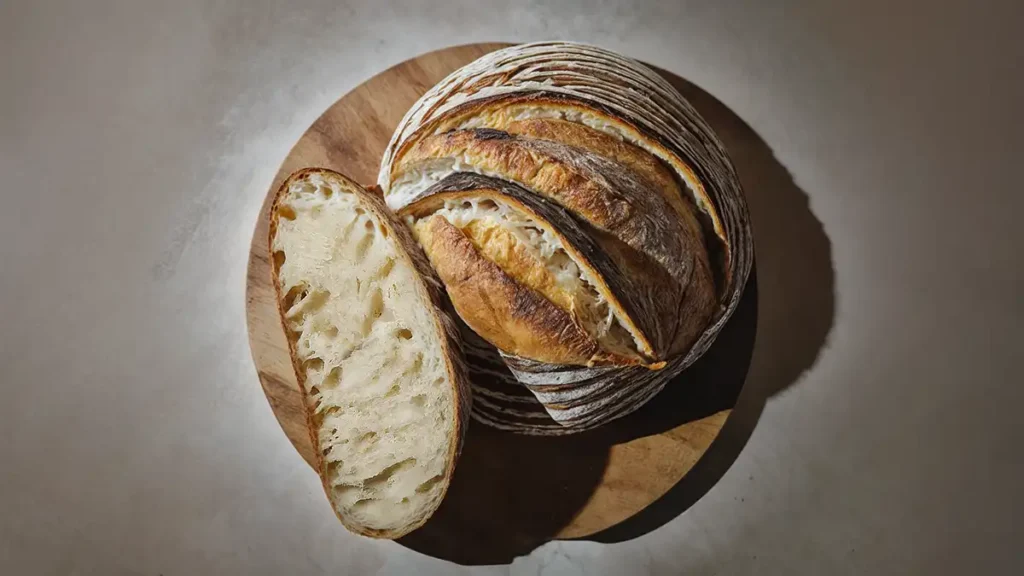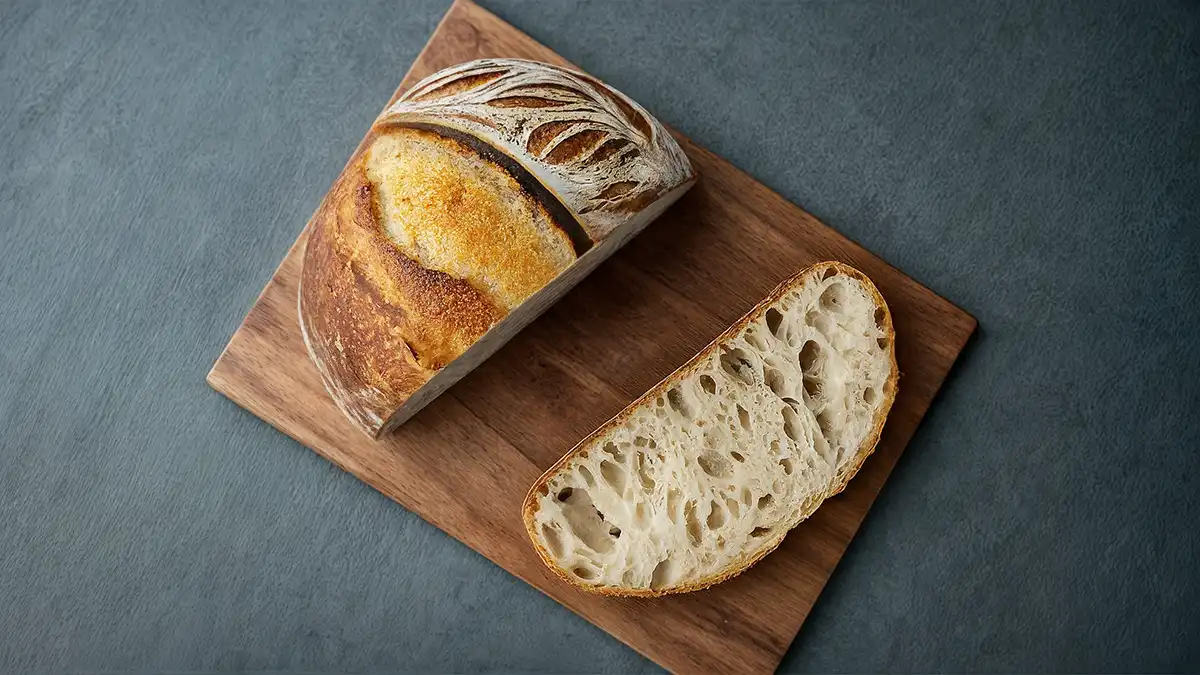Sourdough Bread Recipe Without Starter is here for all you flavor seekers who may have been intimidated by the thought of maintaining a sourdough starter. Today, we’re breaking down barriers by simplifying the traditional sourdough method without compromising taste. Whether you’re a novice or a seasoned baker, this approach lets you bake a spectacular loaf using just the basics from your pantry. Let’s dive in and get those hands doughy!
Table of Contents
| Section | Content |
|---|---|
| Introduction | Overview of making sourdough bread without a starter, highlighting the simplicity and accessibility of the method. |
| Gathering Ingredients and Equipment | List of necessary ingredients and baking tools needed for making no-starter sourdough bread. |
| Step-by-Step Guide | Detailed instructions for mixing, rising, shaping, and baking sourdough bread using yeast instead of a starter. |
| Variations and Tips | Tips and tricks for enhancing the flavor and texture of sourdough bread, including suggestions for flour types and additional ingredients. |
| FAQs | Answers to common questions about making sourdough bread without a starter, covering alternatives to traditional methods. |
Why Consider a No-Starter Sourdough Recipe?
Traditionally, sourdough bread relies on a fermented starter to act as a natural leavening agent. This method, while rewarding, requires a commitment to feed and maintain the starter over days or even weeks. However, with our no-starter method, you can decide to bake on a whim and still enjoy sourdough bread with that distinctively delightful tang and satisfying chewiness.
Simplifying Sourdough: A Modern Twist on a Classic
This method uses easily accessible ingredients like instant yeast to mimic the effects of a natural starter, offering a practical solution for those hectic days when you crave homemade bread without the prep time.
Table: Traditional vs. No-Starter Sourdough
| Feature | Traditional Sourdough | No-Starter Sourdough |
|---|---|---|
| Time Required | Several days to cultivate the starter | Less than a day from start to finish |
| Skill Level | Intermediate to advanced | Beginner-friendly |
| Taste | Pronounced tangy flavor | Mildly tangy, still delicious |
| Texture | Distinctively chewy | Slightly softer, but very satisfying |
Gathering Ingredients and Equipment for Sourdough Bread Recipe Without Starter

Before we start baking, let’s gather all our ingredients and tools. Having everything ready ensures a hiccup-free baking session. Let’s prep for a fabulous sourdough loaf that doesn’t even need a starter!
Essential Ingredients for No-Starter Sourdough Bread
To make this simpler version of sourdough bread, you will need just a few basic ingredients that you likely already have in your kitchen. Here’s what to gather:
- Flour: High-gluten or all-purpose flour works best for achieving that desirable chewy texture. Read more about the nutritional benefits of different flours.
- Water: Use lukewarm water to help activate the yeast more quickly.
- Salt: Just a pinch to enhance the flavor.
- Instant Yeast: This is the secret ingredient that replaces the traditional sourdough starter, helping the bread rise without the need for pre-fermentation.
Key Equipment for Baking Bread
Having the right tools can make the difference between good and great bread. Here’s what you’ll need:
- Mixing Bowl: For combining your ingredients.
- Dutch Oven or Baking Stone: These are ideal for baking bread as they emulate the environment of a professional oven, giving your bread a beautiful crust.
- Parchment Paper: Useful for transferring the bread into the oven without sticking.
- Kitchen Scale: Precision is key in baking, so a scale will help you measure ingredients accurately for consistent results.
Linking It All Together
While you’re picking your ingredients, think about what to pair with your fresh sourdough. Check out this sandwich sourdough bread recipe for unique fillings that highlight sourdough’s subtle tang. It’s a perfect match for your no-starter loaf, turning it into a mouthwatering sandwich!
Step-by-Step Guide to Making Sourdough Bread Recipe Without Starter

Now that we have our ingredients and tools ready, let’s dive into the fun part: making our sourdough bread! Follow these steps to create a delicious loaf without the need for a traditional starter.
1. Mixing the Dough
Let’s get things started by combining our ingredients to form the dough. It’s easier than you think!
- Combine Dry Ingredients: In your mixing bowl, whisk together the flour, salt, and instant yeast. Ensuring these are well mixed will help your bread rise evenly.
- Add Water: Gradually pour in the lukewarm water while stirring with a sturdy spoon or your hand until a shaggy dough forms.
2. First Rise: Letting the Dough Do Its Magic
After mixing, it’s time for the first rise, which allows the yeast to start working:
- Cover the Dough: Place the dough back in the bowl and cover it with a clean kitchen towel. Let it sit in a warm spot in your kitchen.
- Wait for the Rise: This should take about 1 to 2 hours. You’re looking for the dough to roughly double in size, showing that the yeast is active and doing its job.
3. Shaping and Second Rise: Creating the Perfect Loaf
Once our dough has doubled, it’s time to shape it:
- Shape the Dough: Turn the dough out onto a lightly floured surface and shape it into a round loaf. Don’t overwork it; just enough to form a nice shape.
- Prepare for Second Rise: Place the shaped dough on a piece of parchment paper for easy handling later.
4. Baking: The Transformation into Golden Deliciousness
Baking is where the magic happens. Follow these steps to get that perfect crust and soft interior:
- Preheat Your Oven: Preheat your oven along with your Dutch oven or baking stone inside. This step is crucial for achieving that artisan-style crust.
- Score and Bake: Just before baking, score the top of your dough with a sharp knife. This helps the bread expand properly in the oven. Transfer the dough into your hot Dutch oven, cover it, and bake according to the recipe instructions.
Watch and Learn: Sourdough Bread Recipe Without Starter
For those who prefer a visual step-by-step guide, check out this helpful tutorial on making sourdough bread without a starter:
Variations and Tips for Perfecting Your Sourdough Bread Recipe Without Starter

Baking sourdough bread is a blend of art and science. Stick to the basics for a solid loaf, but don’t shy away from a little experimentation. Mixing in new techniques and expert advice can elevate your bread to a work of art. Here’s some guidance to enhance your sourdough skills.
Exploring Flour Varieties
Different types of flour can dramatically change the flavor and texture of your bread. Here’s how you can mix things up:
- Whole Wheat Flour: Adds a nutty flavor and denser texture. It’s a hearty option that pairs well with strong cheeses and robust soups.
- Rye Flour: Delivers a deeper, earthy taste perfect for a more robust loaf.
- Gluten-Free Options: For those avoiding gluten, there are blends specifically designed for bread-making that can substitute traditional wheat flour.
For more details on using different flours, check out this guide to purple sweet potato recipes, which explores creative uses of varied ingredients in baking.
Adding Flavorful Twists
Enhancing your sourdough with unique ingredients can elevate it from simple to spectacular:
- Herbs and Spices: Incorporating herbs like rosemary or spices such as cinnamon can create aromatic and flavorful bread.
- Cheese and Olives: Adding chunks of cheese or slices of olives can give your loaf a delicious savory twist.
For creative ideas on incorporating unusual ingredients, see this elderberry bombs recipe, which showcases how to use unique elements in kitchen creations.
Achieving the Perfect Crust and Crumb
The crust and crumb of your sourdough are crucial elements that distinguish a good loaf from a great one. Here are some tips to perfect them:
- Steam in the Oven: Creating steam during the baking process helps develop a shiny, crackly crust. You can achieve this by placing a pan of water in the oven during baking.
- Scoring Techniques: Proper scoring allows the bread to expand beautifully and can also be a way to add artistic flair to your loaves.
For additional insights into crafting the ideal crust, consider this article on simple mac and cheese recipes without flour, where similar principles of achieving texture and flavor depth are discussed.
Serving and Pairing Your Bread
Finally, consider how you’ll serve your sourdough. Freshly baked bread can be a standalone treat or a complementary side to many dishes:
- Soups and Stews: Sourdough bread is perfect for dipping into rich broths.
- Sandwiches: Use your sourdough to build a delicious sandwich filled with fresh, wholesome ingredients.
Discover exciting sandwich ideas with this banana date smoothie recipe, highlighting the importance of pairing flavors and textures effectively.
FAQs About Making Sourdough Bread Recipe Without Starter
What can I use if I don’t have a sourdough starter?
If you don’t have a sourdough starter, don’t worry! You can use instant yeast as a quick and effective substitute. This allows you to still enjoy the texture and flavor similar to traditional sourdough bread but without the extended fermentation time required by a starter.
Is sourdough starter necessary?
No, a sourdough starter is not absolutely necessary to create sourdough-style bread. You can achieve a similar texture and a mild sour flavor using alternatives like instant yeast or a combination of yogurt and baking soda, which act as leavening agents as well.
What can you use instead of starter in bread?
Besides instant yeast, you can use a combination of lemon juice and baking soda or even commercial bread improvers that are readily available in stores. These ingredients help the bread rise and can mimic the tangy flavor of a traditional sourdough.
Can I use yeast instead of sourdough starter?
Absolutely! Yeast is a great alternative to sourdough starter. It speeds up the bread-making process significantly while still providing a delicious and satisfying result. Just ensure you use the right type of yeast—typically instant or active dry yeast works best.
Conclusion
Baking sourdough bread without a starter might seem like a shortcut, but it opens up a world of possibilities for those who want the sourdough experience without the wait. Whether you’re a novice baker or simply short on time, this method ensures everyone can enjoy homemade sourdough anytime.
Thank you so much for reading! If you have more questions or want to share your experiences and tips, don’t hesitate to leave a comment below. Let’s keep the conversation going and spread the joy of baking!

